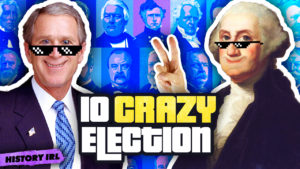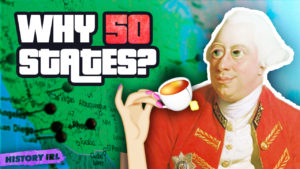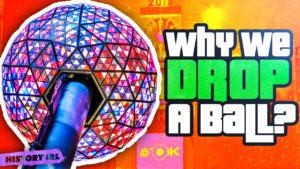History of The Ball Drop
Happy New Year, IRL fam! It’s time for a new beginning – a fresh start – and the magical time of the year where everyone starts making a crap ton of resolutions that will probably last until the second week of January!
And as we usher in the new year, here in the US one of the most iconic ways to celebrate is to watch the ball drop in time square. But why is it such a staple in our culture and what is its history?
It all started on December 31, 1904, in Midtown Manhattan right around the newly constructed New York Times Building.
The moment the clock struck midnight, a thunderous explosion went off and the surrounding crowd was shocked, thinking the buildings were on fire. But they weren’t. The event was a PR stunt put together by The Times’ publisher Adolph S.
Ochs, who thought it would be a fantastic way to show off the shiny new skyscraper. See Mr. Ochs had bought the paper in 1896 when it was on the verge of bankruptcy and spent the early years of his tenure trying to save it. When things slowly started to turn around, he decided to move their headquarters to Longacre Square, now known as Times Square wink wink, just north of the intersection of Broadway and Seventh Avenue. They were set to move on New Year’s Day 1905, and Mr. Ochs decided to christen the building with a literal bang.
The Times called it “a torch to usher in the newborn, a funeral pyre for the old which pieced the very heavens.”
For the coming years, the Times would continue to use explosives and fireworks, but by 1907, they replaced this tradition with a 700-pound, electrified ball that was lowered from the top of the Times Building and landed once the clock struck 12.
But why the ball?
Well, it’s for the same reason why Ochs decided on setting his building on fire 2 years prior. He wanted a bigger spectacle – something that would make everyone pay attention, and draw people into the area. At the time a giant electrical ball was way more futuristic and eye-catching. Walter F. Palmer, the paper’s chief electrician, suggested the change after seeing one on the nearby Western Union buildings all lit up, and suggested the time ball – a time-signaling device that drops at a predetermined time.
Ochs hired sign designer Artkraft Strauss to construct the original ball that was built from iron and wood and was lit up by one hundred incandescent bulbs. On New Years’ Eve 1907, the ball began to drop 10 seconds before midnight down the 70-foot flagpole. When it finally hit the top of the building, it completed an electric circuit to a 5-foot tall sign that lit up on all four sides of the building and triggered a fireworks show.
And since then, a version of that ball has been dropped every single year, becoming an iconic fixture of New York culture, and spread around the country with the invention of the TV.
The moral of the story, if you want to draw attention to your cool new building, pretend you just lit it on fire, scare people to death, and then make it an iconic holiday tradition.
Host: Timo Bach – Research/writer: Lyka Naranjo – Video Editor: Isaiah John Jornales








